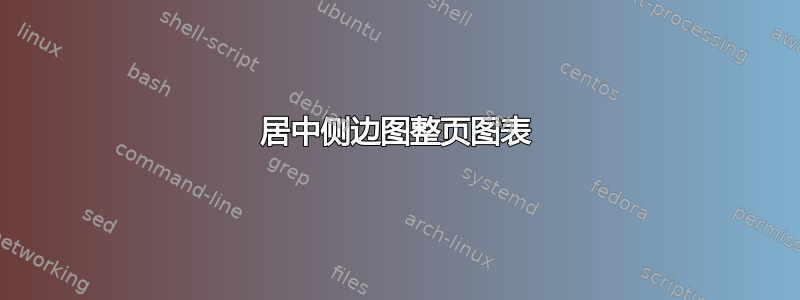
我有一个非常大的交换立方体,我想在图中显示它。似乎最简单的方法是使用sidewaysfigure*,因为立方体的宽度比高度要大得多(因为所有顶点的表达式的长度),但这给我带来了一个问题:即命令根本\centering不起作用:标题和图表都没有在页面上“垂直”居中。
我曾尝试使用回忆录的\centerfloat命令,但这并没有改变什么。
我认为这可能与我的“图形”实际上只是一个显示数学环境有关,因为即使我将 切换到sidewaysfigure*,figure标题仍然不会居中。(图表也没有,但公平地说,它超出了右边距很多,所以也许 TeX 正在尽最大努力……)
(奖励)立方体顶点的标签仍然很长。有没有办法在底面的每个表达式中的 $\otimes\Omega_{X_\bullet^\mathcal{U}}^1$ 之前放置换行符?
我的代码(省略红色脚注):
\documentclass{memoir}
\usepackage{rotating}
\usepackage{tikz-cd}
\newcommand{\nerve}[1]{X_{#1}^\mathcal{U}}
\newcommand{\nervesimplex}[1]{\nerve{#1}\times\Delta^{#1}}
\newcommand{\anotherbullet}{\circ}
\newcommand{\comparison}[1]{\mathfrak{C}_{#1}}
\newcommand{\id}{\mathrm{id}}
\begin{sidewaysfigure*}
\centering
\[
\begin{tikzcd}[row sep=huge,column sep=tiny]
&\left(\nerve{\bullet} f_p^i\times\id\right)^*\pi_{p-1}^*\left(\nerve{\bullet} z_{p-1}\right)^*\mathcal{E}_0^j
\ar[rr, "\comparison{p}^i\left(\left(\nerve{\bullet}z_\anotherbullet\right)^*\mathcal{E}_0^j\right)" description]
\ar[dd,"\left(\nerve{\bullet} f_p^i\times\id\right)^*\Gamma" description, near start]
\ar[ld, "\left(\nerve{\bullet}\times f_p^i\right)^*\pi_{p-1}^*(\mathcal{E}_\bullet^j z_{p-1})" description]
&&\left(\id\times f_p^i\right)^*\pi_p^*\left(\nerve{\bullet}z_p\right)^*\mathcal{E}_0^j
\ar[dd,"\left(\id\times f_p^i\right)^*\Gamma" description]
\ar[ld, "\left(\id\times f_p^i\right)^*\pi_p^*(\mathcal{E}_\bullet^j z_p)" description]\\
\left(\nerve{\bullet} f_p^i\times\id\right)^*\pi_{p-1}^*{\mathcal{E}_{p-1}^j}
\ar[rr,"\comparison{p}^i(\mathcal{E}_\bullet)" description, near start, crossing over]
\ar[dd,"\left(\nerve{\bullet} f_p^i\times\id\right)^*\nabla_{p-1}^{(j)}" description]
&&\left(\id\times f_p^i\right)^*\pi_p^*{\mathcal{E}_p^j}&\\
&\left(\nerve{\bullet} f_p^i\times\id\right)^*\pi_{p-1}^*\left(\nerve{\bullet} z_{p-1}\right)^*\mathcal{E}_0^j\otimes\Omega^1_{\nervesimplex{p}}
\ar[rr, "\comparison{p}^i\left(\left(\nerve{\bullet}z_\anotherbullet\right)^*\mathcal{E}_0^j\right)\otimes\id" description, near start]
\ar[ld, "\left(\nerve{\bullet}\times f_p^i\right)^*\pi_{p-1}^*(\mathcal{E}_\bullet^j z_p)\otimes\id" description]
&&\left(\id\times f_p^i\right)^*\pi_p^*\left(\nerve{\bullet}z_p\right)^*\mathcal{E}_0^j\otimes\Omega^1_{\nervesimplex{p}}
\ar[ld, "\left(\id\times f_p^i\right)^*\pi_p^*(\mathcal{E}_\bullet^j z_p)\otimes\id" description]\\
\left(\nerve{\bullet} f_p^i\times\id\right)^*\pi_{p-1}^*{\mathcal{E}_{p-1}^j}\otimes\Omega^1_{\nervesimplex{p}}
\ar[rr,"\comparison{p}^i(\mathcal{E}_\bullet)\otimes\id" description]
&&\left(\id\times f_p^i\right)^*\pi_p^*{\mathcal{E}_p^j}\otimes\Omega^1_{\nervesimplex{p}}
\ar[from=uu,"\left(\id\times f_p^i\right)^*\nabla_p^{(j)}" description, near start, crossing over]
&
\end{tikzcd}
\]
\caption{The cube given by combining the simplicial condition on the connection with the (pullback of the) definition of being generated in degree zero. That is, the front face is \cref{equation:simplicial-condition-square}; and the left and right faces are \cref{equation:generated-in-degree-zero-definition-square}. The bottom face is the tensor product of the top face with $\Omega_{\nervesimplex{p}}^1$.}\label{figure:the-secret-cube}
\end{sidewaysfigure*}
答案1
您可以尝试以下方法使图形垂直居中:
\vspace*{\fill}
% Your figure
\vspace*{\fill}
我无法编译您提供的示例,因此无法检查它是否适合您的设置。
我希望这有帮助。



